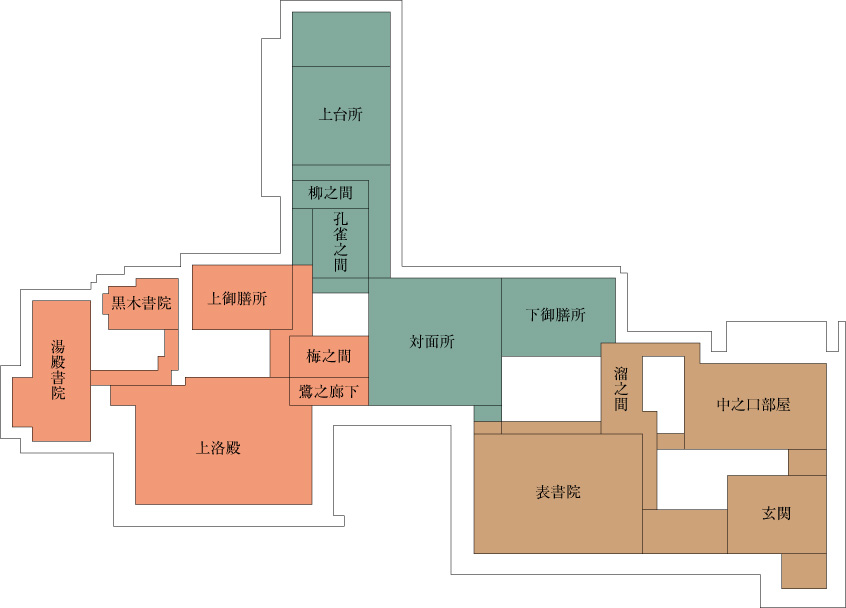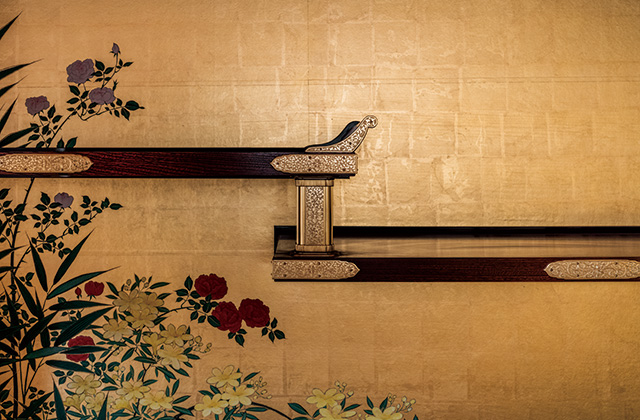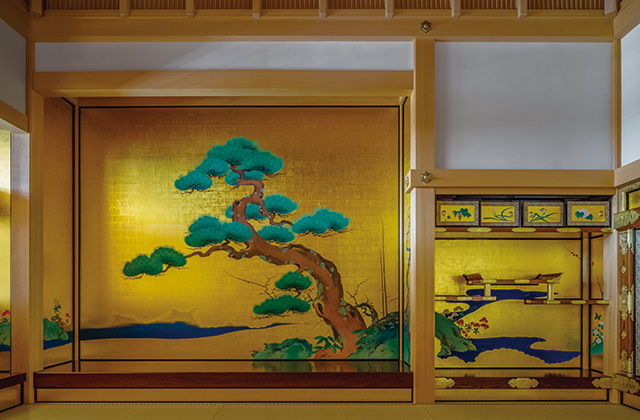Nagoya Castle
About The Hommaru Palace
The Masterpiece of Castle Palace Architecture
Nagoya Castle's Hommaru Palace was completed in 1615 and was originally used as the administrative offices and residences of the first feudal lord of Owari. The palace's interior was richly decorated with gorgeous wall and screen paintings, and fine, decorative metal fittings, earning it a high reputation for its quality art and advanced craftsmanship. As such, it was recognized as masterpiece of Edo period (1603-1867) castle palace construction. The palace and tower keeps were the first castle structures to be designated as a National Treasure. Unfortunately, the palace and much of Nagoya Castle was destroyed in wartime air raids of 1945, however using Edo period plans and other historical records, the palace was authentically restored in 2018 to its original magnificence.
A Wealth of Historical Materials has Enabled Authentic Restoration
Although most of Nagoya Castle's valuable structures were destroyed in the air raids of WW2, a wealth of remaining historical records have enabled accurate, authentic restoration of the palace. Items such as the 1,047 surviving Edo period (1603-1867) sliding doors, screens and panels designated Important Cultural Assets, 309 pre-war architectural survey and measurement drawings, 700 photographs, and around 2,000 foundation stones remain. There are very few cases nationally where such an abundance of quality historical and cultural sources remain. Based on these historical records, and with the cooperation of experts in various fields, the Hommaru Palace could be authentically restored.
Architectural Style of Samurai Mansions
The Hommaru Palace consists of 13 structures, containing over 30 rooms, and covering an area of 3,100㎡. It includes the Omote Shoin, the official administrative offices of the first Lord of Owari, Tokugawa Yoshinao, the Jorakuden, the accommodation facilities for the third Edo Shogun, Tokugawa Iemitsu, including the Yudono Shoin, bathing room and more. This luxurious architectural style, known as Shoin-zukuri, was preferred by the samurai caste as formality and etiquette were highly valued. Each room's styling denoted its rank, while the lord's audience chamber is positioned at a higher elevation than the other rooms as a show of authority.
Configuration of the Palace

Shelf Decoration Fittings

Alcove for the display of ceramics and hanging scrolls









